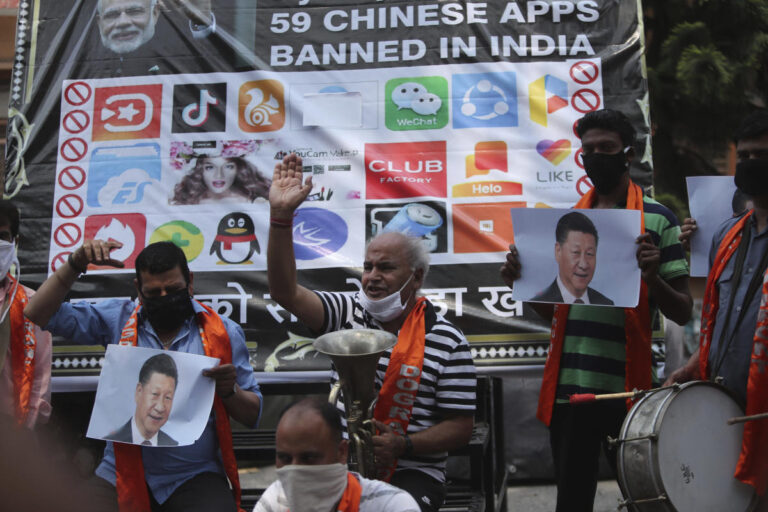NEW DELHI (AP) – Hugely popular Chinese app TikTok could be kicked out of the United States, where a bill to outlaw the video-sharing app has won Congressional approval and is on its way to being signed into law. It is about to be submitted to President Biden.
The app was banned in India about four years ago. Here’s what happened:
Why did India ban TikTok?
In June 2020, TikTok users in India said goodbye to the app run by Chinese internet company ByteDance. New Delhi suddenly banned the popular app along with dozens of other Chinese apps following military clashes along the India-China border. Twenty Indian and four Chinese soldiers were killed, and relations between Asia’s two giants have fallen to a new low.
Citing privacy concerns, the government said Chinese apps posed a threat to India’s sovereignty and security.
The move mainly attracted widespread support in India, where protesters have called for a boycott of Chinese products since deadly clashes in the remote Karakoram border region.
Digital policy expert and technology website MediaNama.
India had also restricted investments from Chinese companies months before the ban, Pahwa added. “TikTok was not a one-off case. India has now banned over 500 Chinese apps so far.”
How have users and creators responded?
At the time, there were about 200 million TikTok users in India. And the company employed thousands of Indians.
But TikTok users and content creators needed a place to go, and this ban gave them an opportunity to capture a large, multi-billion dollar market. Within a few months, Google published his YouTube Shorts and Instagram rolled out its Reels feature. Both imitated the short-form video production that TikTok excelled at.
“And they ended up taking most of the market that TikTok had given up,” Pahwa said.
In India, TikTok content was very local and very unique. It opens a window into the life of small-town India, with videos sent in from second and third-tier cities showing people doing tricks while laying bricks, for example.
However, in the four years since the ban, most content creators and users have migrated to other platforms.
Winnie Sangma misses not being able to earn a little money by posting videos on TikTok. But after her ban, she moved to Instagram and now has 15,000 followers. Most of this process is relatively painless.
“You can also grow followers and earn money on Instagram, but the experience is not like TikTok before,” he said.
Rajiv Dutta, who used to scroll frequently on TikTok, also switched to Instagram after the ban. “It wasn’t really a big deal,” he said.
How is India’s ban different from the US?
A bill to outlaw the app has been approved by Congress and now awaits Biden’s signature.
The move gives ByteDance, the app’s parent company, nine months to sell, and an additional three months if the sale is underway. If this doesn’t happen, TikTok will be banned. The ban will take at least a year to take effect, but it could be extended due to potential court challenges.
India’s 2020 ban was swiftly implemented. Companies like TikTok were given time to answer questions about privacy and security, and were permanently banned by January 2021.
But the situation in the United States is different, Pahwa says. “TikTok has decided not to go to court in India, but the US is a bigger revenue market for them. Also, the First Amendment in the US is pretty strong, so it’s unlikely that the US will do this as well as in India. It’s not going to be easy,” he said, referring to the U.S. Constitution’s right to free speech.
As Chinese-made apps proliferate around the world, countries need to assess their dependence on China and develop ways to reduce it, as the apps can pose national security risks. Pahwa says.
The app is also banned in Pakistan, Nepal, and Afghanistan, and is also restricted in many European countries.
“China’s intelligence and cybersecurity laws could allow Chinese apps to operate to protect their own security. That creates mistrust and poses a national security risk to other countries. ,” Pahwa said.
“There should be different rules for democracies and authoritarian regimes where corporations can act as extensions of the state,” he added.
—-
This article corrects an expert’s erroneous reference to the Fourth Amendment instead of the First Amendment.

